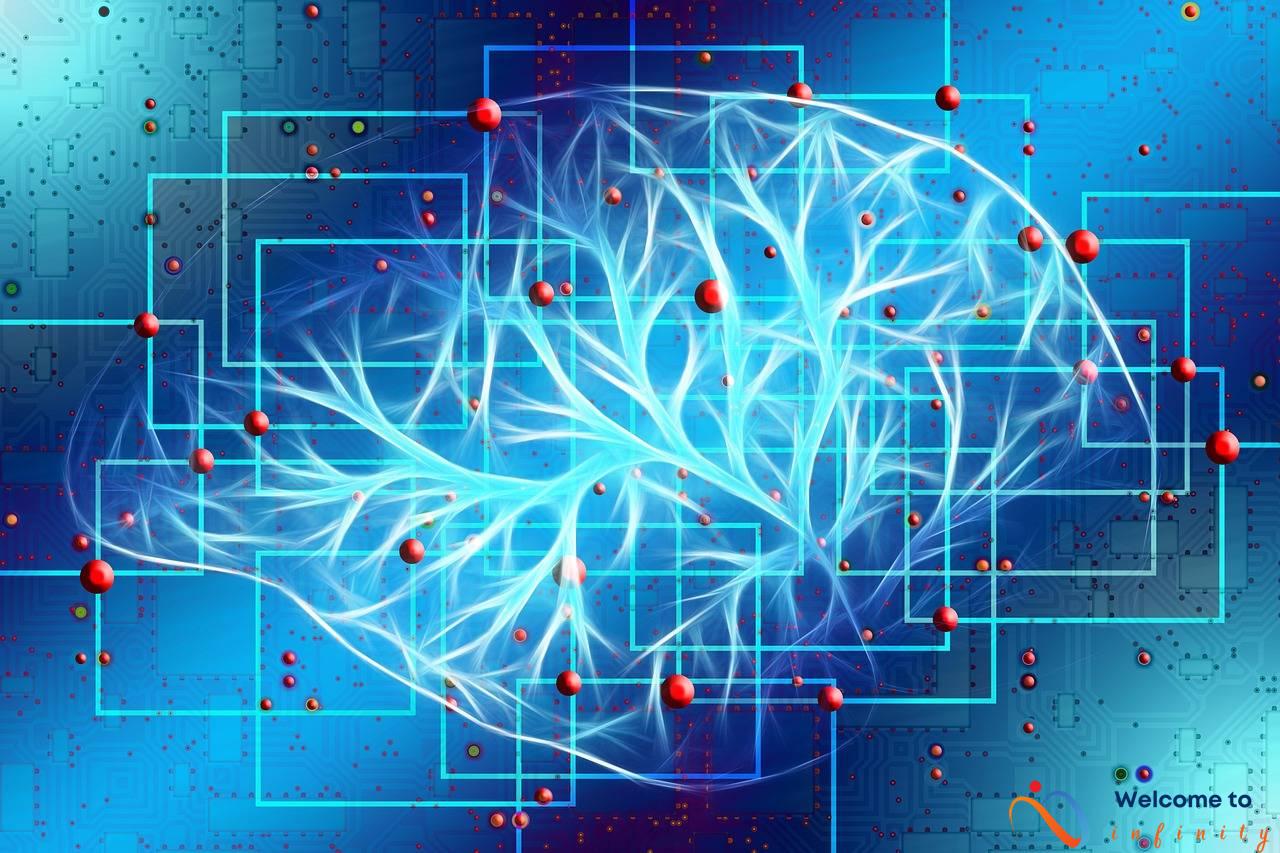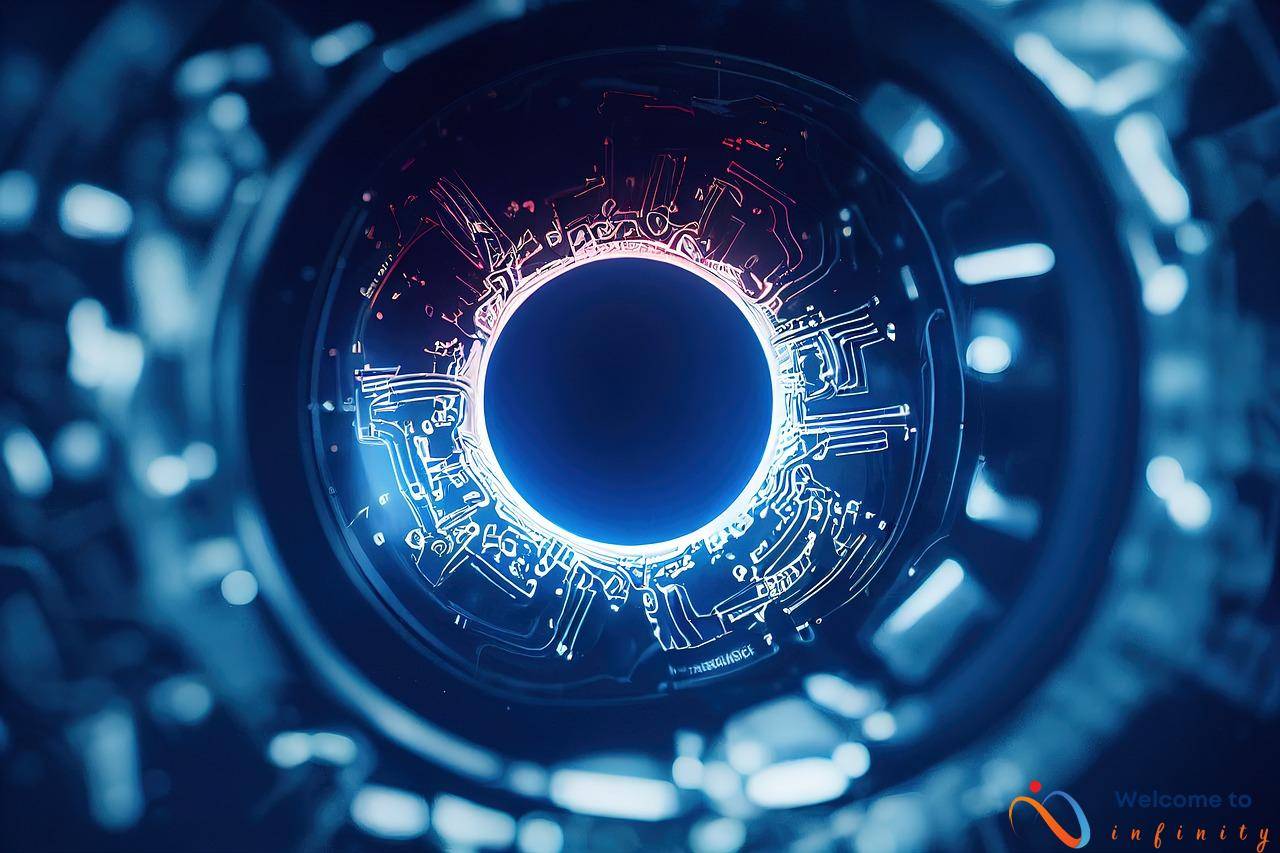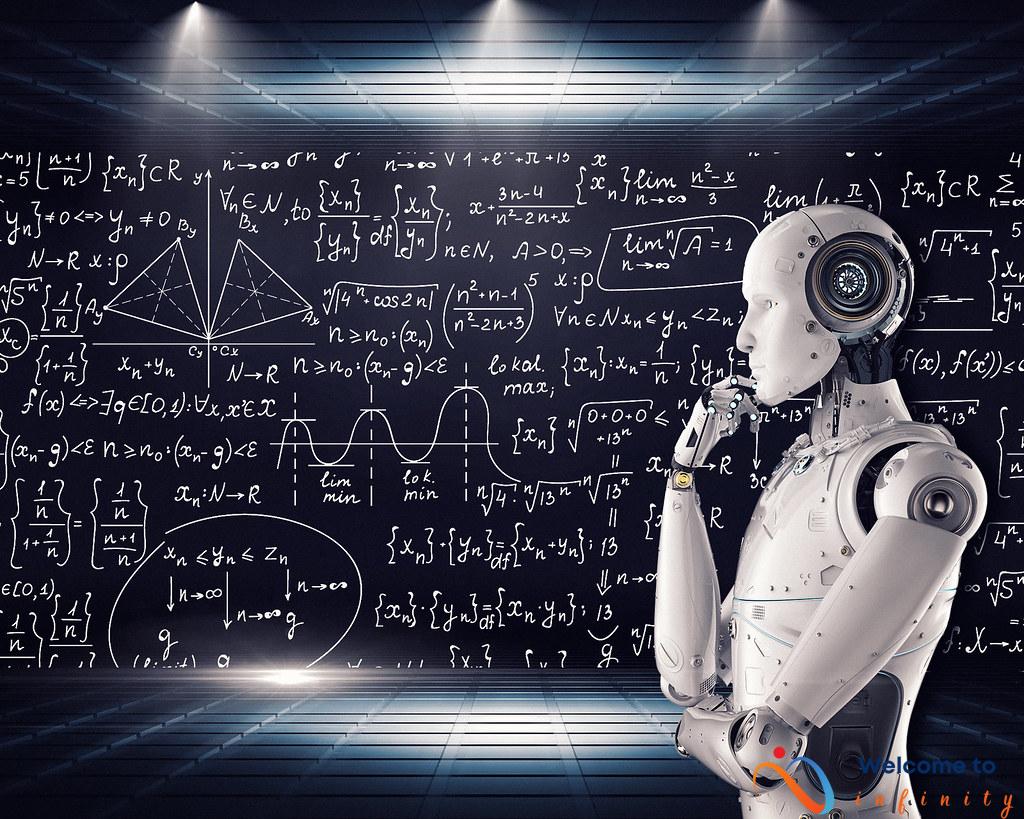The integration of machine learning in IoT is transforming how smart devices function and how sensor data is analyzed, significantly impacting various industries, businesses, and homes. Smart devices such as wearables, smart speakers, and home automation systems are equipped with advanced machine learning algorithms and predictive analytics to enhance their performance and functionality. With the benefits of machine learning applications in IoT, users can experience seamless automation, efficient monitoring, and effective analysis of sensor data.
Machine learning applications in IoT have significantly revolutionized the way smart devices perform. Wearable devices have become essential personal assistants that monitor vital signs, fitness, and daily habits of individuals, thanks to machine learning algorithms. Similarly, smart speakers are now capable of understanding and responding to voice commands through machine learning models that enhance voice and language recognition. Machine learning models can also be implemented in home automation systems, helping users automate household chores, improve security, and reduce energy costs.
Machine learning techniques facilitate efficient and accurate analysis of vast amounts of sensor data gathered by IoT devices. Predictive analytics and classification-based techniques such as regression algorithms help identify patterns in data analysis, thereby predicting outcomes. Clustering techniques are employed to identify groups of devices with similar behavior, while anomaly detection techniques aid in identifying potential anomalies in the sensor data. Though machine learning in IoT holds immense potential, there are significant challenges such as data privacy and security, which need to be addressed.
Importance of Machine Learning in IoT
The importance of machine learning in the Internet of Things (IoT) cannot be overstated. It offers countless possibilities for businesses, homes, and industries to streamline processes, automate mundane tasks, and monitor and predict outcomes that greatly benefit users. By using machine learning algorithms, IoT devices can become smarter and more efficient, making them more useful to their users.
In the business world, machine learning can be used to optimize supply chains by predicting inventory demand and reducing waste. In homes, IoT devices can be used to automate household tasks such as cleaning, cooking, and managing home security. In industries, machine learning can be used to improve operational efficiency and reduce costs.
One of the main benefits of using machine learning in IoT is the ability to collect and analyze vast amounts of data from sensors and other sources. By using this data, IoT devices can learn from their users and surroundings, becoming more personalized and responsive over time. This, in turn, enhances the user experience and makes the devices more valuable to their users.
- Automate mundane tasks such as cleaning and cooking
- Collect and analyze vast amounts of data from sensors and other sources
- Predict outcomes and reduce waste in supply chains
- Improve operational efficiency and reduce costs in industries
By exploring the significance of machine learning in IoT applications, businesses, homes and industries can greatly benefit from the efficiencies and improved experiences that it offers.
Applications of Machine Learning in Smart Devices
Smart devices have become more advanced with the integration of machine learning algorithms in their system. Machine learning in smart devices enhances their capabilities and functionality by providing personalized features to the users. It also makes these devices more intelligent in terms of interpreting and reacting to various situations based on sensor data analysis.
Wearables such as fitness trackers and smartwatches use machine learning algorithms to monitor and analyze the vital signs, activity patterns, and fitness goals of the wearer. With this information, it can give personalized fitness recommendations, training programs, and nutrition plans. Machine learning can also detect anomalies in data and alert the wearer about any potential health issues.
Smart speakers, on the other hand, have the capability to learn and adapt to the user's preferences and habits. Using machine learning algorithms, the speaker can recognize voice commands, predict the user's needs, and provide appropriate responses. This is done by analyzing past user data and by continuously learning from the user's interaction with it.
Machine learning in home hubs enhances security, decreases energy costs, and automates household chores for users. With machine learning algorithms, home hubs can learn the user's habits, preferences, and routines to adapt to their needs. For example, with the user's permission, the home hub can automatically lock the doors, turn off the lights, and turn on the security system when they leave the house. This not only saves energy but also increases security.
Overall, machine learning in smart devices brings convenience, efficiency, and personalization to the users. With the combination of smart devices and machine learning algorithms, users can have a more advanced, personalized, and intelligent experience with their gadgets.
Machine Learning for Wearables
Wearable devices are now integral parts of our daily lives. These devices are capable of monitoring various aspects of an individual's life, from fitness levels to sleep patterns. Powered by machine learning, the performance of wearables has significantly enhanced to provide users with better insights.
Machine learning algorithms play a key role in improving the accuracy of these devices, including monitoring vital signs. By analyzing raw sensor data collected from these devices, machine learning models can detect patterns in a user's daily activities, such as identifying whether a person is walking, running, or sleeping. As a result, wearables can now accurately track the number of steps taken, distance traveled, and calories burned, among others.
Machine learning also contributes to enhancing the performance of wearables in terms of improving the battery life of these devices. Through supervised learning, machine learning algorithms can learn a user's usage pattern and adapt the device's settings to conserve power. This ensures that the user can get more out of the device before needing to charge it.
Wearable devices that utilize machine learning can also provide users with customized feedback. This helps them better achieve their fitness goals and lead healthier lifestyles. Machine learning can analyze data from wearables to identify trends and provide insights on how users can improve their fitness routines and track progress.
Overall, machine learning has transformed the capabilities and functionality of wearable devices. With the help of machine learning models, wearables can provide users with more accurate and useful insights, improved accuracy and better battery life.
Machine Learning for Smart Speakers
Smart speakers have taken over the market in the past few years, and with the constant evolution of technology, machine learning is now applied to enhance users' experience. One of the most significant impacts of machine learning in smart speakers is the development of voice and language recognition. Using natural language processing algorithms, smart speakers can now understand and interpret human speech accurately.
Another application of machine learning in smart speakers is personalization. By analyzing user behavior and preferences, the smart speaker can adapt to the user's routine, making suggestions, and offering personalized recommendations. Machine learning algorithms can also predict user preference, making the smart speaker more intuitive and responsive to the user's needs.
In conclusion, machine learning has greatly impacted the development of smart speakers. With the use of natural language processing, personalization, and predictive algorithms, smart speakers have become more than just a speaker but a personalized assistant that can improve daily life.
Machine Learning for Home Hubs
Home hubs equipped with machine learning algorithms have transformed traditional households into smart homes, bringing forth numerous practical benefits for its users. One of the prime benefits of machine learning in the field of home automation is improved security. Machine learning models can analyze data from various sources including sensors, cameras, and smart locks, enabling the smart home hub to detect potential threats and alert users.
Another key benefit of machine learning in smart home hubs is the ability to save energy costs. With the use of algorithms, machine learning can detect patterns in the usage of energy and identify areas where energy can be saved without hindering the user's lifestyle. This can include adjustments in lighting, temperature control, and powering off electronics.
Furthermore, machine learning can automate household chores for users, freeing up valuable time for families and individuals. With the use of automated robots and appliances, machine learning can predict usage and schedule them accordingly, such as scheduling the cooking of a meal or cleaning the house. This enhances the overall experience of living in a smart home, making daily tasks significantly more manageable.
Overall, incorporating machine learning in home hubs can greatly improve the daily lives of individuals and families while providing practical benefits such as enhanced security, decreased energy costs, and automation of household chores.
Analysis of Sensor Data with Machine Learning Techniques
One of the major applications of machine learning in IoT is the analysis of sensor data. With the vast amount of data generated by connected devices, machine learning techniques are needed to help predict outcomes and identify patterns. By using algorithms such as classification and regression, machine learning can analyze sensor data from various sources and provide insights into the behavior of connected devices.
Classification and regression algorithms are useful in predicting outcomes and identifying patterns in sensor data analysis. Classification techniques can be used to categorize data into specific groups, making it easier to identify patterns and trends. Meanwhile, regression techniques are useful in predicting the value of a specific variable based on other variables in the dataset.
Another machine learning technique commonly used in IoT is clustering. Clustering involves grouping devices with similar behavior together based on patterns in their sensor data. This helps identify outliers and can provide insights into the behavior of connected devices.
Finally, machine learning can also be used for anomaly detection. This involves using unsupervised learning algorithms to identify potential anomalies in sensor data that could indicate failure or other abnormal activity. By detecting anomalies early, machine learning can help prevent device failures and improve overall system performance.
- Classification and regression techniques are useful in predicting outcomes and identifying patterns in sensor data analysis.
- Clustering helps identify outliers and provides insights into the behavior of connected devices.
- Anomaly detection using unsupervised learning algorithms can help prevent device failures and improve overall system performance.
Overall, the analysis of sensor data using machine learning techniques is a critical component of IoT systems. By providing insights into connected device behavior and predicting outcomes, machine learning can help improve system performance and prevent failures.
Classification and Regression Techniques
Classification and regression are two fundamental concepts of statistical learning that play a significant role in machine learning algorithms used for IoT applications. These techniques involve defining a mathematical model that can learn from data and make predictions about new data points. Classification-based techniques are used for predicting outcomes or classifying data into specific categories while regression-based algorithms are used for identifying patterns in sensor data analysis.
Classification techniques are used to classify the data into different categories based on specific features or criteria. These techniques include decision trees, Bayesian networks, and support vector machines. Regression techniques, on the other hand, are used to predict a numeric value for an input, based on other input variables. Regression models are used to predict values such as temperature, air quality, and humidity, etc. These techniques are linear regression, polynomial regression, and logistic regression.
Classification and regression techniques are used extensively in IoT ecosystems. For instance, classification-based techniques are used to classify personal data in a smartwatch into different categories such as fitness data, health data, and sleep data. Regression-based algorithms, on the other hand, can predict the weather or forecast the energy demand in a smart grid.
In conclusion, classification and regression techniques play a vital role in analyzing sensor data and making predictions in IoT ecosystems. These techniques enable the devices to automate tasks, monitor specific activities, and enhance the overall user experience with smart devices.
Clustering Techniques
Clustering techniques are becoming increasingly important in IoT environments due to the sheer quantity of data that needs to be analyzed. Essentially, clustering is a machine learning technique that is used to identify groups of devices with similar behavior from large datasets. By doing so, it allows data analysts to work with smaller, more manageable groups of data, rather than trying to make sense of the entire dataset at once.
One of the major advantages of clustering is that it allows patterns to be identified in the data that would otherwise go unnoticed. These patterns can then be used to gain insights into how devices are being used, and to make predictions about future behavior. For example, if a group of smart home devices is clustered together based on energy usage, it might be possible to predict which devices are likely to turn on or off at a particular time, and plan energy usage accordingly.
The use of clustering techniques in IoT also has benefits from a security perspective. By identifying groups of devices that have similar behavior, it is possible to detect when a device starts to behave abnormally. For example, if a device suddenly starts transmitting more data than usual, it might be an indication that it has been hacked, and is being used for malicious purposes. By identifying these anomalous devices quickly, it is possible to prevent further damage to the network.
In summary, clustering techniques are a powerful tool for identifying groups of devices with similar behavior in IoT environments. By allowing patterns to be identified in large datasets, they help data analysts to gain insights and make predictions about device behavior. Additionally, they have benefits from a security perspective, allowing anomalous devices to be detected and prevented from causing damage to the network.
Anomaly Detection Techniques
Anomaly Detection is a key machine learning technique used in the IoT ecosystem to detect potential anomalies in sensor data that could indicate failure or other abnormal activity. The technique involves identifying patterns in data that deviate from the normal behavior of the system, enabling the system to predict potential anomalies before they occur.
One of the machine learning algorithms commonly used in anomaly detection is unsupervised learning. Unsupervised learning is used when the dataset does not have labeled examples, and the algorithm has to discover the natural underlying structure of the data. It allows the system to learn from the dataset without any specific instructions, enabling it to identify and categorize anomalies more efficiently.
Unsupervised learning algorithms work by training the system to identify patterns within the data. The system would learn the normal behavior of the system and flag any patterns that deviate significantly from the standard behavior. The algorithm can detect various anomalies, such as unexpected spikes in data and unusual events that could lead to system failure. In essence, anomaly detection helps in predicting and preventing system breakdowns before they happen and taking the necessary corrective actions.
Anomalies can occur in various areas within the IoT ecosystem, whether it's in the form of application data transfer, network activity, or device behavior. By using machine learning techniques such as unsupervised learning, developers can now build systems that can detect, learn, and adapt to different scenarios, in turn, ensuring reliable and efficient data analysis in IoT ecosystems.
It is essential to note that machine learning techniques must be integrated with data security protocols to ensure data privacy and protection. As the use of IoT continues to grow and embrace machine learning, it is predicted that anomaly detection techniques will be continuously perfected, allowing for more efficiency and accuracy when identifying and handling abnormal system activities.
Challenges and Future Implications of Machine Learning in IoT
While machine learning in IoT has a wide range of benefits, including automation and risk management, there are also several challenges to consider. One major challenge is the need for data privacy and security. IoT devices generate vast amounts of data, and ensuring that data is protected from cyber threats and unauthorized access is critical. To address this challenge, developers must implement robust security measures and privacy policies that protect users' personal information.
Another challenge is the interoperability of IoT devices. As more devices enter the market, there is a risk that they may not work with each other, leading to data silos and decreased functionality. To combat this issue, industry standards and protocols must be established to ensure that devices can communicate effectively with each other.
In terms of future implications, the integration of machine learning in IoT is expected to increase efficiency and productivity across a wide range of industries. For example, Machine Learning algorithms can be applied to optimize manufacturing processes, predictive maintenance in industry, and predictive maintenance of machinery. However, as the technology continues to advance, there is also a risk of reliance on automation and the potential loss of jobs.
Another trend to watch out for is the shift towards edge computing in IoT. Edge computing involves processing data locally on the device instead of sending it to a cloud server, which can improve speed and reduce the amount of data that needs to be transferred. This approach can also improve security and privacy as the data never leaves the device.
In conclusion, while machine learning in IoT presents many opportunities, it is crucial to address the challenges and implications associated with this technology. By prioritizing privacy and security and promoting interoperability and technological advances, machine learning in IoT has the potential to revolutionize the way we live and work.











